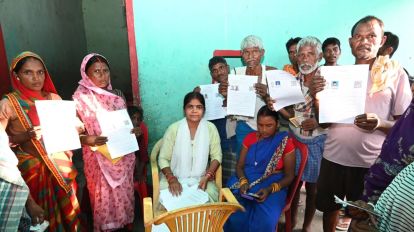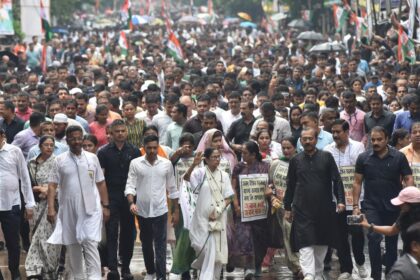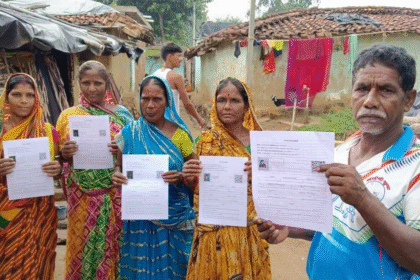Eight and a Half Rules the ECI Broke to Manufacture a Success Story for Bihar’s SIR Drive
New Delhi: An analysis of the Election Commission of India’s own data, backed by ground reports, shows that to hit their self-imposed target, the commission had to break its own rules.
The story of the Bihar ‘special intensive revision’ (SIR) unfolded in two acts.
First, the plan announced on June 24 collapsed. In its place came a frantic and haphazard enforcement of ‘rules’. Second, in the chaos between these two phases, the EC may have destroyed the very system it claimed to uphold.
Act I: June 25 – July 4: A collapse, a ‘logistical nightmare’
On June 24, the ECI issued a 19-page order detailing the first intensive revision of Bihar’s electoral rolls in two decades. The plan was meticulous. Nearly 98,500 Booth Level Officers (BLOs) would visit every home, give each voter a pre-filled form in duplicate, check it against 11 approved documents, collect the form with a receipt, and upload the data to a new “ECINet” portal. Its goal: to “ensure no voter is left out.”
Critics immediately warned that the plan was a “logistical nightmare” doomed to fail. In The Hindu, researcher Rahul Shastri calculated that 4.74 crore people, mostly the young and poor in a document-scarce state, would be required to produce papers. He argued this would make the high school certificate a de facto proof of citizenship, potentially disenfranchising 2.4 crore people.
The ECI’s own data soon proved them right. Following its rules led to failure. By July 4, after a week and a half, collection reached a dismal 4.8%. The plan was collapsing.
A ground survey by Bharat Jodo Abhiyaan volunteers confirmed this failure. Published in The Indian Express, it found a “Himalayan discrepancy” between the ECI’s claims and reality. While the ECI claimed it had distributed most forms, the survey found that two-thirds of adults had not received one. Worse, it found that 37% of potential voters – a staggering 2.9 crore people – lacked any of the 11 required documents.
The ECI’s process was slow, exclusionary, and creating “confusion and chaos.”
Act II: July 5 – Present: The sprint that broke the system
Faced with disaster, the ECI’s teams pivoted. The data shows a sudden shift from procedure to pure speed. The collection rate exploded.
This sprint wasn’t a miracle of efficiency. It was a procedural demolition. The ECI broke at least eight and a half of its own rules to achieve this speed:
1) The Rule: Annexure B, 3): BLOs must conduct door-to-door visits to every household.
The Violation: A
In West Champaran found BLOs had stopped door-to-door visits, calling them unfeasible. Instead, they handed out forms from a central point, like a village square.
2) The Rule: Order, 7(iii): Every elector must receive the Enumeration Form in duplicate.
The Violation: The Abhiyaan survey found only 6% of people who received forms got two copies. A BLO admitted that he never provided two and was surprised it was a rule.
3) The Rule: Annexure B, 3f: BLOs must issue an acknowledgment receipt on the elector’s copy of the form.
The Violation: By giving only one form, this step became impossible. Citizens were left with no proof they had complied.
4) The Rule: Order, 5 & Annexure C: The ECI has a specific list of 11 approved documents for eligibility.
The Violation: A report from Maner showed BLOs refusing valid documents like birth certificates and taking Aadhaar cards instead – a document not on the approved list. The process became a blind collection of an invalid document.
5) The Rule: Order, 7(iv): BLOs must guide the public on filling up the form correctly.
The Violation: Haste replaced guidance. BLOs in West Champaran admitted they stopped explaining the forms because it was too slow, leaving citizens like Surendra Rai to believe, falsely, that his Aadhaar card was valid.
6) The Rule: Annexure B, 3h: BLOs must upload verified forms with attached documents through the ECINet app.
The Violation: The sprint worked by collecting now and verifying later. One BLO confessed their order was to submit forms “regardless of whether documents are included, signatures are present, the form is fully completed, or a photo is attached.” Verification was abandoned for submission.
7) The Rule: Order, 5: The process must facilitate, not harass, vulnerable groups.
The Violation: The Abhiyaan survey showed the process harmed Dalits, EBCs, Muslims, and women. Reports from Darbhanga described widespread fear of a “Votebandi” (ban on voting), creating anxiety in the very communities the ECI claimed to protect.
8) The Rule: Annexure B, 4a: Electoral Registration Officers (EROs) must start scrutinizing forms as and when they are received to identify cases with suspected eligibility.
The Violation: A BLO’s admission that “Verification… may start after that” proves this wasn’t done. The system was a bulk data dump, making real-time review impossible. This delay creates a future crisis. As a ward member in Maner warned, “Later, when the verification will be done… there will be a stampede-like situation.” The ECI is not preventing a problem; it is causing one.
And the half violation that hides it all…
8.5) The Rule: The Spirit of Annexure B, Section 10: The ECI must ensure public dissemination of information and maintain transparency.
The Violation: While the ECI issues daily press notes to the media, it has held no press conferences. This fulfils the letter of the law on transparency but violates its spirit. The commission can therefore broadcast its version of success without facing a single unscripted question from journalists about the “Himalayan discrepancy,” the impossible collection rates, or the chaos documented in ground reports.
By creating this future crisis, the ECI shifts the burden of proof to the citizen. When millions are flagged for deletion after August 1, it will be framed as their failure, not the ECI’s. The sprint to collect forms was a tool to launder administrative failure into citizen liability.
The paradox of the Bihar drive is that the Election Commission had to break its own rules to manufacture success. The latest 83.66% collection rate is a statistic built on the wreckage of the ECI’s own rulebook. The sprint may be over, but the chaos and the threat of mass disenfranchisement it created have just begun.
Also Read: Georgia Protests Rise Against Growing Influence of Russia, China, and Iran








